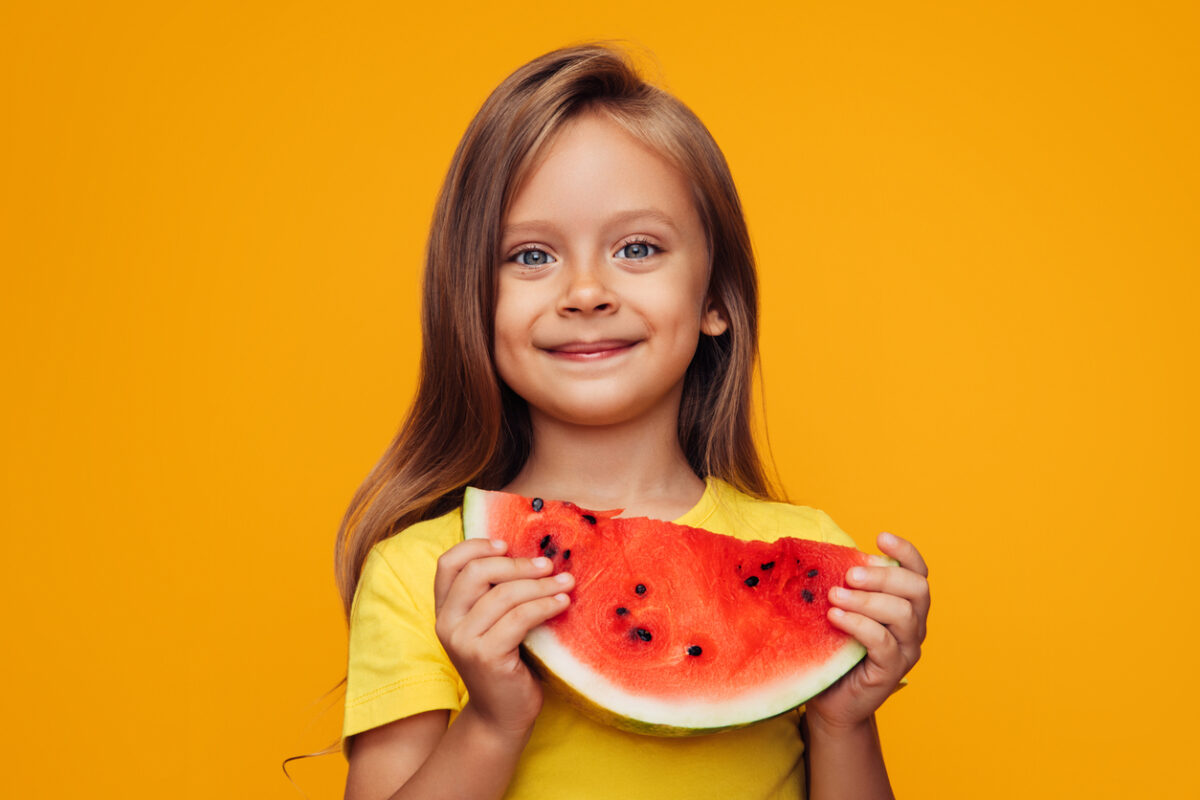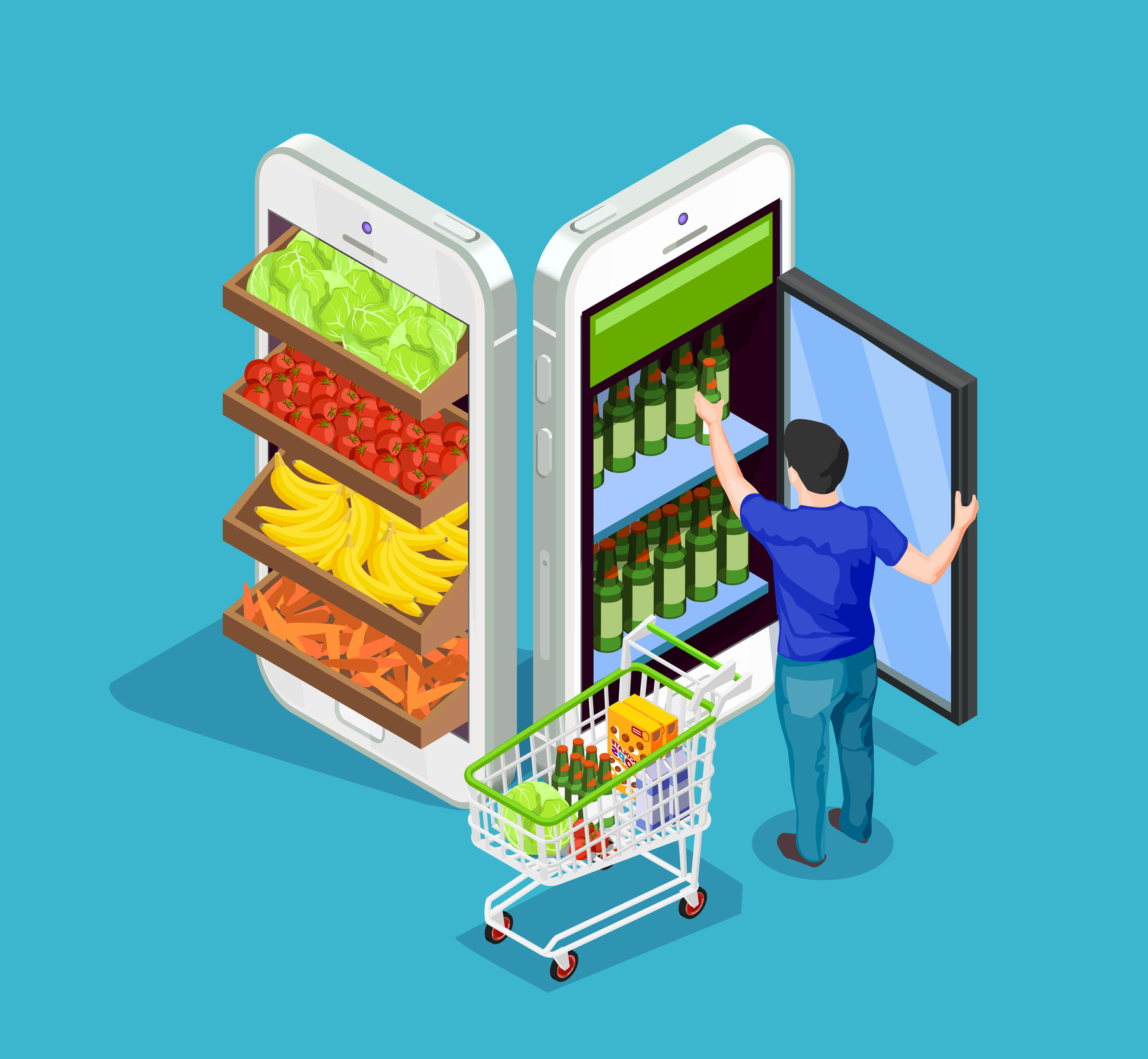The robot takeover? How AI could change careers in the food and drink sector

As the food and drink industry strives to become more sustainable, efficient, and innovative, new technologies are being developed for and adopted by food and drink businesses. Many of these innovations are backed by artificial intelligence (AI) – an area of computer science where machines and software are built to simulate human intelligence. Conversation is building around AI’s potential to put jobs at risk in many sectors, including food and drink as the technology starts being applied to more sections of the industry. But does it really spell the end of some careers in F&B? We look at the areas the technology could shift most.
AI and agriculture
In the UK, much investment is going towards developing greener, smarter farming practices, many of which are supported by AI and machine learning technology. Recent market analysis shows smart agriculture was worth over $19 billion in 2022 and is expected to reach a value of over $21 billion by 2029. Some of the emerging AI-backed technologies in the agricultural field include weather forecasting, automated harvesting, soil health monitoring, crop yield optimisation, automated irrigation, and real-time data analytics, to name a few.
Roles most likely to be impacted by the shift towards AI in agriculture include those struggling with labour shortages. Prior to Brexit, the UK relied heavily on seasonal EU migrant workers to take on horticulture roles like picking and packing fresh crops. As Professor Georgios Leontidis, Interdisciplinary Director of Data and AI at the University of Aberdeen, explains: “It’s expected that AI will be in higher demand in areas where there is a shortage of staff, such as fruit pickers. This will prompt a shift towards alternative solutions involving AI and robotics.” Interest in robot crop harvesting is already growing in the UK. Last year, leading berry supplier Summer Berry Company started using a raspberry-picking robot developed by the University of Plymouth spinout Fieldwork Robotics on its farm in Portugal. The robots pick crops round the clock and are estimated to be able to gather two kilos of fruit per hour. Fieldwork Robotics says each robot will eventually be able to pick 25,000 raspberries a day which is 10,000 more than a human picker achieves on average in eight hours.
“There will inevitably be a change in the work that people do and the roles that are needed, but it should not necessarily be seen as a complete threat – rather an opportunity.”
The technology could become useful for protecting crops too. “AI can pick up repetitive tasks that require accuracy”, says Rebecca Geraghty, Chief Commercial Officer at Agrimetrics, which operates a Data Marketplace for the UK’s food and farming sector. “For example, identifying pests in support of a more targeted crop protection regime and as part of integrated pest management. Without AI this would require samples to be sent to a lab to be analysed. By doing this automatically in the field, farming can become much more targeted and thus sustainable.”
AI-backed tech is also likely to be used by greater numbers in agriculture to process data more effectively, and “[free] up people for productive work”, says Geraghty. “There will inevitably be a change in the work that people do and the roles that are needed, but it should not necessarily be seen as a complete threat – rather an opportunity.” Being able to collect reliable data consistently is also essential to help the sector monitor and reduce greenhouse gases. “The right data enables more targeted management and mitigation activities at the farm and the food supply chain level, better use of key inputs, more timely interventions, and less wasted productivity on ineffective practices”, says Geraghty, adding that agriculture is likely to see a surge in demand for AI and data scientists and software developers to help businesses use data to reduce their emissions.
AI and nutrition
AI is also expected to play a key role in the future of nutrition, helping more people eat healthily and sustainably. One of the areas it is already being applied to is personalised nutrition, where individuals are given nutritional guidelines based on their DNA and genetic makeup. The technology already supports the programme and app ZOE. Founded by Professor of Genetic Epidemiology at King’s College London, Tim Spector, Jonathan Wolf, and George Hadjigeorgiou in 2017, ZOE creates a personalised eating plan according to an individual’s physiology. Personalised nutrition is still in its early stages however, and right now isn’t an affordable option to everyone who wants a dietary plan tailored to their own health profile. The test kit costs nearly £300 and must be purchased with a membership plan that starts at £24.99 per month.
Nutrition research is also developing with AI. Earlier in July, a project was launched to develop more personalised preventative measures for obesity and excessive weight gain in children. The EprObes project, being led by researchers at Spain’s Centre for Biomedical Research (CIBER) and its Physiopathology of Obesity and Nutrition branch (CIBEROBN), will bring together data analysis and machine learning algorithms and design more effective and bespoke interventions that physicians and health professionals can use to prevent and treat obesity and overweight in children.
Food Matters Live’s partner Qina, is a data and insights platform which uses technology to help companies learn and develop solutions in the personalised nutrition sector. “At Qina, we try to bridge the gap between science and solutions. We do that by bringing in the nutritional expertise and helping companies to innovate within the space of personalised nutrition,” Mariette Abrahams, CEO and founder of Qina told Food Matters Live. “What that means is we track the personalised nutrition industry, so we see what the new start-ups in the industry are, what the new innovations are, what the new scientific advances that are driving the trends in personalised nutrition are, and then we try to see what the evolution of the market space is.” Qina has followed these developments for the last five or six years to provide companies with insight that can help them decide whether introducing personalised nutrition to their business (through a new app or platform for instance) is worth it. Abrahams continues: “If it is the right area that they want to go into, we then bring on our domain expertise – whether that’s nutrition, whether that’s behavioural science, whether that’s statistics – because most of us have PhDs in the team, it means that we can really bring together the different data points that really bring personalised nutrition to life.”
While AI is a great aid to these three examples, its growing value for the nutrition sector doesn’t mean the role of health professionals will be less in demand. The ZOE programme still requires a whole team of accredited nutritionists to support customers and advise them around their results, and the EprObes project relies on nutrition researchers to carry out the necessary clinical and preclinical studies.
AI and retail
Innovative technology is also changing the way consumers buy food, both in-store and through online apps. One major development in the US and UK within the past few years has been the advent of checkout-free supermarkets. The ‘just walk out’ technology first emerged in 2018, in Seattle, Washington with Amazon Go, and has since taken off in British stores such as Tesco, Sainsbury’s, Aldi and Morrisons. As the technology looks to make grocery shopping a more seamless experience, it inevitably reduces the need for cashiers or even staff at self-scan checkouts. Going checkout-free seems to appeal to consumers too. A 2020 report from French multinational IT technology service and consulting group Capgemini shows nearly 60% of consumers who have visited automated stores would complete all their purchases at a checkout-free shop if they had a good experience, while 66% said they thought automation would help to tackle problems they face when shopping, such as long queues.
“By leveraging predictive analytics and machine learning, AI can help identify bottlenecks, streamline processes, reduce waste, improve efficiency, and ensure timely delivery of products.”
Some companies have used AI to help retailers make it easier for consumers to shop for what they want. Spoon Guru for instance offers a nutrition intelligence solution which retailers can upload to their company’s Google Cloud. The platform uses machine learning models, supported by human expert nutritionists, to help retailers optimise product catalogue categorisation both online and in-store, and offer better personalised recommendations to consumers. “AI plays an integral role in Spoon Guru’s ability to analyze vast amounts of data, improve accuracy over time, detect allergens, and flag anomalies that our team of in-house nutritionists can review”, says Shruti Chawla, Marketing Vice President at Spoon Guru. “By leveraging Artificial Intelligence, Spoon Guru can process thousands of products in seconds to enable retailers to enhance the food discovery experience for their customers that align with their unique dietary needs, preferences, and health goals.”
Food delivery giant Deliveroo’s latest ‘Snack to the Future’ report suggests AI could eventually be used to create a food ordering system that is better tailored to a customer’s personal nutrition requirements. It predicts that customers ordering food in the future could have access to a device called ‘BreathTech’. This technology would allow them to view their personal ‘Breathprint’ upon breathing onto a series of highly sensitive sensors that can detect levels of acetone, ammonia, and toluene and can signal an individual’s risk of developing diseases such as diabetes, kidney malfunction, or lung cancer. The Breathprints could help customers receive advice around the foods they should be eating to improve their health and wellbeing, according to the company.
Another area of retail that has seen greater reliance on AI is customer service, with chatbots and virtual assistants being used to respond to and resolve customers’ problems quickly. “These AI-driven customer service solutions can operate 24/7, handle multiple queries simultaneously, and provide consistent and accurate responses, improving customer satisfaction and reducing the workload on human customer service teams,” explains Chawla.
Problem-solving AI chatbots were also predicted to play an important role in the supermarket of 2050, according to the Embassy of Food event which took place last year at the annual Dutch Design Week. Here, the Nonhuman Nonsense design studio created a virtual supermarket for the event, where an AI chatbot had been trained to speak with consumers and help them identify their environmental concerns and favourite food products, delivering product recommendations based on the responses.
AI and supply chain
The technology is expected to boost effectiveness in several areas within the supply chain. As Chawla notes: “AI can optimize the food supply chain by analyzing data from various sources, including transportation logistics, inventory levels, and supplier performance. By leveraging predictive analytics and machine learning, AI can help identify bottlenecks, streamline processes, reduce waste, improve efficiency, and ensure timely delivery of products.” As the benefits of quick and efficient inventory management are realised by more businesses, she adds it is likely the sector will see an influx in demand for roles in areas like manual data entry and inventory management.
Adopting automated technology is also expected to optimise practices for preventing food fraud and maintaining food safety. One example is a project called HyperTaste, being led by a group at IBM Research in Zurich. The scientists have created an ‘e-tongue’ with 16 sensors made from conductive polymers that act like taste buds. When dipped into liquid the tech can identify chemical information in drinks and has so far been tested on fruit juices, wines, and different types of mineral waters. In comparison to existing processes, HyperTaste is cheaper to operate, only takes around a minute to analyse a liquid’s composition, and can be used outside of a laboratory.
According to an industry report from supply chain management software group TraceGains released earlier this year, over 70% of respondents said they thought automation tools offering ‘real-time risk flagging’ and simplifying information sharing would help them improve their performance in their own roles.
AI in hospitality
Like the agriculture sector, hospitality has also been hit by labour shortages post-pandemic, and investing in AI gives foodservice the opportunity to maintain efficiency even with a smaller headcount. In fast food outlets such as Wendy’s, McDonald’s, and Popeyes in the US for instance, chatbots are being trialled to fully automate the takeaway ordering service in their drive-through lanes. Going one step further, last year, McDonald’s opened its first automated restaurant in Texas, where customers can place their orders using touchscreen kiosks and pick up meals from conveyer belts when driving through. Similar tech is also cooking up a storm in Hong Kong, where the Tai Hing restaurant chain uses fully automated woks to support its chefs.
““It’s important to note that AI technologies are not a silver bullet”
While robotic tech is becoming more popular in foodservice, businesses are investing in the smart systems to enable their employees to move away from more tedious roles. As Ollie Brand, CEO at kitchen management technology firm Zupa explains: “With AI’s efficiency, it can automate the mundane tasks, which could involve very manual repetitive tasks (i.e. chopping food), or operational processes to gather data (i.e. stock management) to inform decisions.” One way AI is helping to inform decisions is through food waste management. Commercial food waste solutions company Winnow Solutions has developed an AI-backed tool called Winnow Vision which can track how much food is thrown away in foodservice kitchens, taking photographs of waste food as it’s discarded, and helping employees build an understanding of how much is wasted over time, as well as which dishes are left uneaten most. It is unlikely such a service will replace any major roles in hospitality, but it could help restaurant and canteen managers make better decisions around menu-planning and stock buying.
AI and product development
AI-backed tools are also becoming important for new product development, helping companies create more innovative food and drink. One business already making strides with the tech is Chilean plant-based meat and dairy alternatives producer NotCo. The company has made a proprietary AI-supported food development platform called Giuseppe, which uses machine learning and stored data to add textures and flavours to plant-based products that match those that people crave from animal-derived food and beverages. In 2022, it even secured a new group of AI patents which will be used to develop aromas and scents for its products that bring up nostalgic memories and emotions such as “the smell of childhood”.
Unilever are also using AI to improve recipe combinations more quickly and efficiently in some of their food formulations, including Hellman’s plant-based mayonnaise. The food giant uses a product design process called ‘in silico’, where computer models produce visual simulations that can predict the shelf life of a specific formulation, as well as develop a particular texture.
Companies are employing AI to enhance predictions around future food trends as well, and produce goods that continue to meet the ever changing demands of consumers. Earlier this year, flavour ingredients developer Givaudan launched its AI-supported Customer Foresight platform, to help it better predict the shifts that will define the future of food ingredients and adapt its products accordingly. In all these instances, AI is aiding NPD rather than removing roles from the sector, at least for now.
Will AI take over F&B jobs?
There’s no doubt AI has already changed multiple areas of the food industry, but the technology will likely develop in ways that aren’t even known yet, and employees should be prepared. “[Individuals] entering the sector should have a mindset of continuous learning and be willing to stay updated with the latest advancements in AI and related fields”, says Chawla, adding that employees should be open to building new technical skills and knowledge. This could be in a range of areas including AI and machine learning, data science and analytics, programming and software development, food science, ethical considerations and regulations, problem-solving and critical thinking, or communication and collaboration. What’s most important is to recognise the importance of AI and not to ignore it, adds Brand.“If people are unwilling to evolve, then either the roles become obsolete or the businesses risk falling behind.”
Switching to a more tech-heavy role in the food industry is no easy task, but not impossible. Based in Manchester, training provider Academy upskills individuals with no prior background in tech and helps them enter technology and leadership careers. Anyone can apply to the organisation’s training programme, with information on education background and experience not required upon application. The company has worked with retailer Ocado, helping them recruit workers for tech roles internally. Some 250 people applied to Academy’s transition course, including customer service staff and food delivery drivers. “The programme showed that 7-10% of Ocado’s non-tech workforce have the underlying potential to successfully transition into tech, even those not having a STEM degree”, says Ashley Ramrachia, CEO of Academy. “We can most likely expect a similar number across the food industry, and Academy’s programme can help non-tech workers in the sector to transition to a tech role, regardless of previous education and background.”
While AI will impact the future of the food industry and careers, it is more likely to grow alongside roles, while also increasing the demand for professions directly related to the tech. “It’s important to note that AI technologies are not a silver bullet”, explains Leontidis. In most cases, employees will still be needed to make sure the technology can function and to carry out more complicated tasks. “While not everyone needs to create new AI technology, it’s important for some to understand how to utilize AI for decision-making”, he adds. “It’s crucial to understand its limitations and potential side effects. Therefore, I recommend promoting teamwork and interdisciplinary collaboration to solve complex issues, like the transition of the industry to net zero, whether it be in agri-food or elsewhere.”









